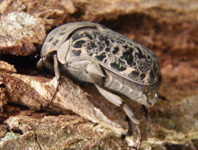Abstract
In four samples of mosses and mosses mixed with lichens collected in the Peruvian region of Cusco, 344 tardigrades, 78 free-laid eggs and six simplexes were found. In total, nine species were identified: Cornechiniscus lobatus, Echiniscus dariae, E. ollantaytamboensis, Isohypsibius condorcanquii sp. nov., Macrobiotus pisacensis sp. nov., Milnesium krzysztofi, Minibiotus intermedius, Paramacrobiotus intii sp. nov. and Pseudechiniscus ramazzottii ramazzottii. Isohypsibius condorcanquii sp. nov. is most similar to I. baldii, but differs mainly by the absence of ventral sculpture, the presence of the oral cavity armature, a different macroplacoid length sequence and a different shape of macroplacoids. The new species also differs from other congeners by a different dorsal sculpture, the absence of cuticular bars under the claws and the absence of eyes. Macrobiotus pisacensis sp. nov. differs from the most similar M. ariekammensis and M. kirghizicus by a different oral cavity armature, the presence of cuticular pores, details of egg morphology and some morphometric characters of both animals and eggs. Paramacrobiotus intii sp. nov. differs from most similar species of the genus by a different type of the oral cavity armature, details of egg morphology and some morphometric characters of both animals and eggs. In addition, we briefly discuss the tardigrade fauna of Peru, and propose a simple and economic system of describing relative lengths of pharyngeal macroplacoids. The system is especially useful in interspecific comparisons and differential diagnoses.

